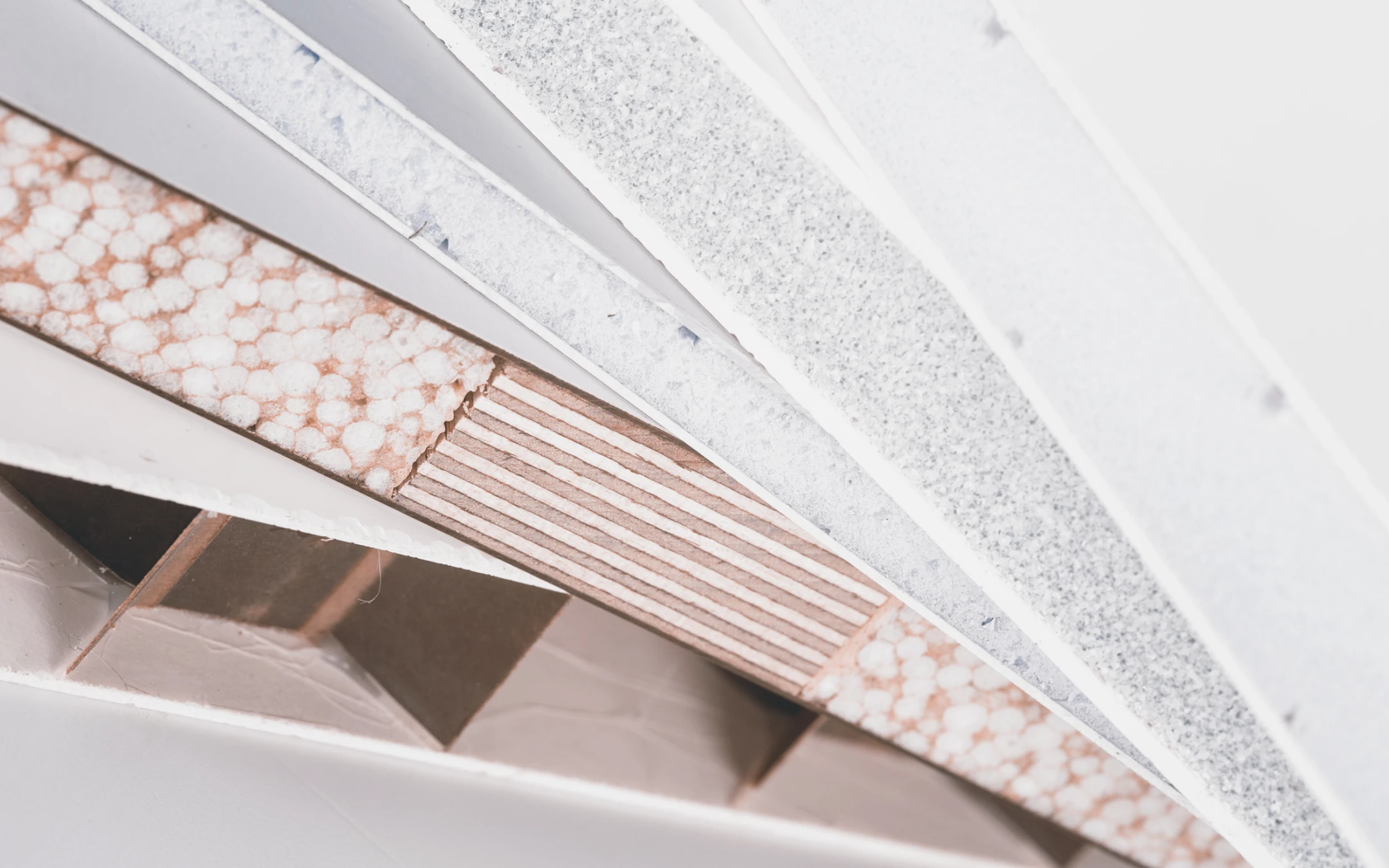

We produce and distribute different types of sandwich panels suitable for use in different areas and applications.
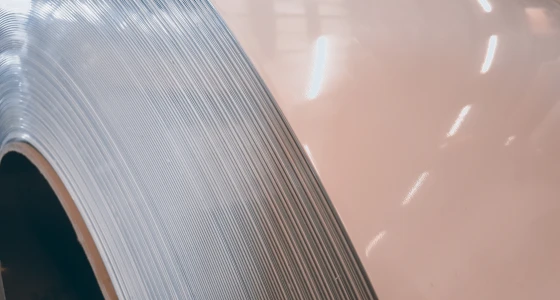
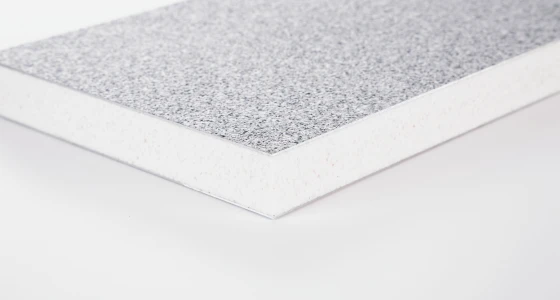

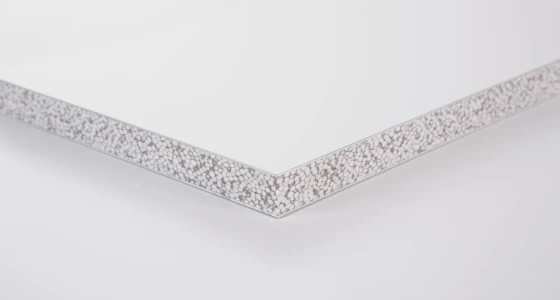

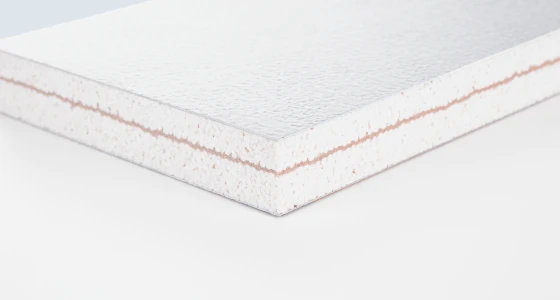
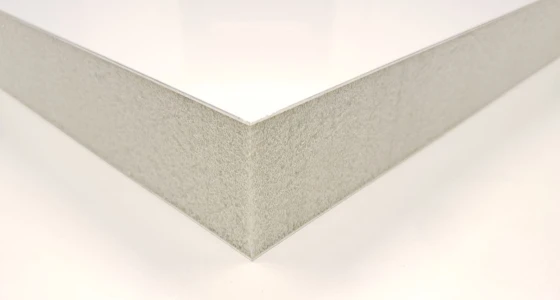
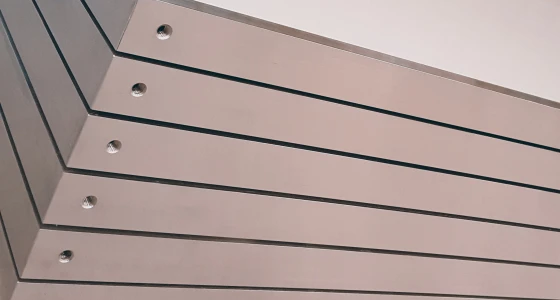
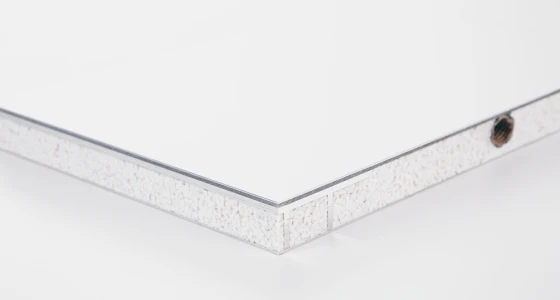
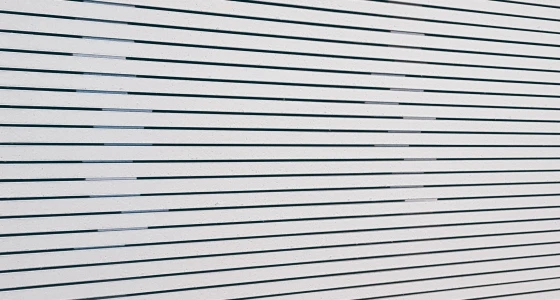
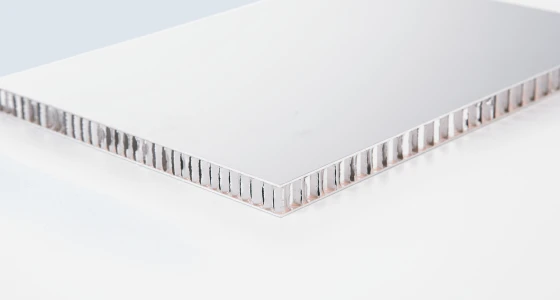
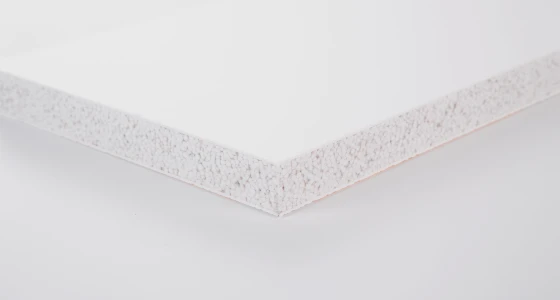
The term sandwich panels covers a specific product group of composite panels which, like a sandwich, consists of two face layers and an intermediate layer. Sandwich panels are mostly used for applications where lightweight construction is important. Due to their special construction, sandwich panels can carry high loads relative to their own weight.
Sandwich panels consist of 2 face sheets and a core that is firmly glued or welded to the two face sheets. Depending on the selected materials and material thicknesses, different properties of the sandwich panels result. The following materials are often used:
Aluminium
Steel
GFRP (glass-fibre reinforced plastics)
HPL
Aluminium honeycombs
Plastic honeycombs
EPS, XPS
PET foams
PVC foams
PUR foams
Balsa wood
Special products such as Corapan®
Sandwich panels are designed for high bending stiffness at low weight. To achieve the best possible effect, the face sheets are designed to be as stiff as possible in tension and compression and the core is designed to be stiff in shear. If the sandwich panel is loaded, the face sheets absorb the resulting tensile and compressive stresses and the core absorbs the shear stresses.
In the following, the most important influencing variables that affect the bending stiffness are listed:
Einflussgrösse | Wirkung |
|---|---|
Dicke der Sandwichplatte | Je dicker, desto biegefsteifer |
Dicke der Deckschicht | Je dicker, desto biegesteifer |
E-Modul der Deckschichten | Je höher, desto biegesteifer |
Schubmodul des Kerns | Je höher, desto biegesteifer |
The mechanical behaviour of sandwich panels is mathematically modelled using linear sandwich theory.
Due to their structure, sandwich panels tend to have poor point load properties. Furthermore, due to their low weight, sandwich panels are at a disadvantage in sound insulation compared to heavier solutions, at least with non-perforated face sheets.
When selecting sandwich panels, it is usually relatively easy to determine which materials are suitable for the structure based on the intended application. The following table lists arguments that play a role in the selection of materials:
Material Deckschichten | Vorteile | Nachteile |
|---|---|---|
Aluminium | Hohe Korrosionsbeständigkeit | Empfindliche Oberfläche |
GFK | Hohe Korrosionsbeständigkeit | Weniger edle Oberfläche |
Stahl | Sehr hohe resultierende Biegesteifigkeit | Bearbeitbarkeit von Stahl |
HPL | Verschiedenste Dekore möglich (dies ist der Hauptgrund, weshalb HPL verwendet wird) | Tiefe Biegesteifigkeit |
PP | Hohe Schlagzähigkeit | Verliert stark an Festigkeit bei höheren Temperaturen |
Material Kern | Häufig verwendet mit folgenden Deckschichten | Vorteile | Nachteile |
|---|---|---|---|
Aluminiumwaben | Aluminium | Hohe Druckfestigkeit | Praktisch keine thermische Isolation |
Kunststoffwaben | Aluminium | Hohe Druckfestigkeit | Praktisch keine thermische Isolation |
EPS | HPL | Billig | Schlechte mechanische Eigenschaften |
XPS | GFK | Unterschiedliche Qualitäten mit unterschiedlichen mechanischen Eigenschaften | Tiefer Schubmodul |
PET-Schäume | GFK | Sehr gute mechanische Eigenschaften d.h. hoher Schubmodul, gute Druckfestigkeit, hohe Beständigkeit bei dynamischer Belastung | Relativ schwer |
PVC-Schäume | GFK | Sehr gute mechanische Eigenschaften (etwas besser als PET) d.h. hoher Schubmodul, gute Druckfestigkeit, hohe Beständigkeit bei dynamischer Belastung | Schlechte Brandeigenschaften |
PUR-Schäume | Aluminium | Sehr gute thermische Isolation (Hauptgrund für Verwendung von PUR) | Schlechte Haftung zu den Deckschichten |
Balsaholz | Aluminium | Sehr gute mechanische Eigenschaften | Teuer |
Corapan® | Aluminium | Kern besteht aus einem Stück pro Platte unabhängig vom Format | Relativ schwer |
Sandwich panels are used for many, mostly flat applications. Various applications and frequently used types of sandwich panels are listed below:
Anwendungen | Aufbau Sandwichplatten |
|---|---|
Wände, Dächer und Klappen von Fahrzeugen | GFK – XPS |
Böden von Fahrzeugen | GFK – Kunststoffwaben |
Böden von Schienenfahrzeugen | Aluminium – PET-Schäume |
Vorgehängte Fassaden | Aluminium – Aluminiumwaben |
Balkonböden und Plattformen | Aluminium – Corapan® |
Überdachungen und Unterstände | Aluminium – Corapan® |
Dachuntersichten | Aluminium – Aluminiumwaben |
Türfüllungen | Aluminium – Corapan® |
Trennwände | Aluminium – Corapan® |
Hallendächer und Hallenwände | Stahl – PUR-Schäume |
Please choose which cookies you want to consent to.